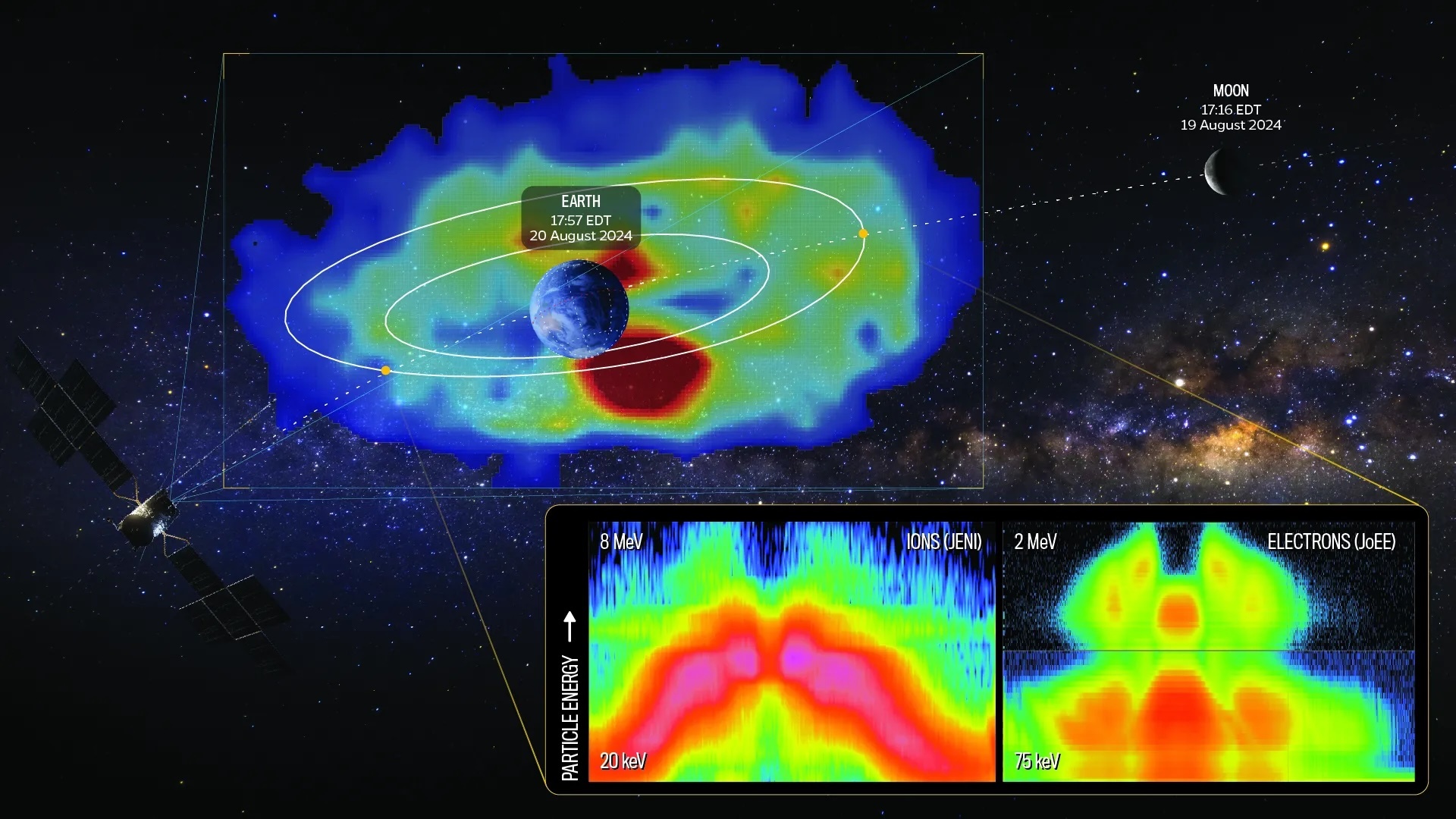From Aug. 19-20, ESA’s (European Space Agency’s) Juice (Jupiter Icy Moons Explorer) mission made history with a daring lunar-Earth flyby and double gravity assist maneuver, a spaceflight first. As the spacecraft zipped past our Moon and home planet, Juice’s instruments came online for a dry run of what they’ll do when they reach Jupiter. During that time, two of NASA’s onboard instruments added another first to the list: capturing the sharpest-ever image of Earth’s radiation belts – swaths of charged particles trapped in Earth's magnetic shield, or magnetosphere.
3.10,2024

The Jovian Energetic Neutrals and Ions (JENI) instrument, built and managed by the Johns Hopkins Applied Physics Laboratory (APL) in Laurel, Maryland, on behalf of NASA, took the image as Juice soared away from Earth. What it captured is invisible to the human eye. Unlike traditional cameras that rely on light, JENI uses special sensors to capture energetic neutral atoms emitted by charged particles interacting with the extended atmospheric hydrogen gas surrounding Earth. The JENI instrument is the newest generation of this type of camera, building on the success of a similar instrument on NASA’s Cassini mission that revealed the magnetospheres of Saturn and Jupiter.
“As soon as we saw the crisp, new images, high fives went around the room,” said Matina Gkioulidou, deputy lead of JENI at APL. “It was clear we had captured the vast ring of hot plasma encircling Earth in unprecedented detail, an achievement that has sparked excitement for what is to come at Jupiter.”
On Aug. 19, JENI and its companion particle instrument Jovian Energetic Electrons (JoEE) made the most of their brief 30-minute encounter with the Moon. As Juice zoomed just 465 miles (750 kilometers) above the lunar surface, the instruments gathered data on the space environment’s interaction with our nearest celestial companion. It’s an interaction scientists expect to see magnified at Jupiter’s moons, as the gas giant’s radiation-rich magnetosphere barrels over them.
On Aug. 20, Juice hurled into Earth’s magnetosphere, passing some 37,000 miles (60,000 km) above the Pacific Ocean, where the instruments got their first taste of the harsh environment that awaits at Jupiter. Racing through the magnetotail, JoEE and JENI encountered the dense, lower-energy plasma characteristic of this region before plunging into the heart of the radiation belts. There, the instruments measured the million-degree plasma encircling Earth to investigate the secrets of plasma heating that are known to fuel dramatic phenomena in planetary magnetospheres.
“I couldn’t have hoped for a better flyby,” said Pontus Brandt, principal investigator of JoEE and JENI at APL. “The richness of the data from our deep-dive through the magnetosphere is astounding. JENI’s image of the entire system we just flew through was the cherry on top. It’s a powerful combination we will exploit in the Jovian system.”
Now after using the Moon’s and Earth’s gravity, Juice's trajectory has been successfully adjusted for a future encounter with Venus in August 2025. That Venus flyby will serve as a gravitational slingshot, propelling Juice back toward Earth and priming it for two additional flybys in September 2026 and January 2029. Only then will the spacecraft, now boosted into high gear, make its grand arrival at Jupiter in July 2031.
The Johns Hopkins Applied Physics Laboratory, in Laurel, Maryland, manages the JoEE and JENI instruments, which together make up the Particle Environment Package (PEP-Hi) instrument suite, for NASA on ESA’s Juice mission. The JoEE and JENI instruments are part of the Solar System Exploration Program, managed at NASA’s Marshall Space Flight Center for the agency’s Science Mission Directorate in Washington.
Quelle: NASA
